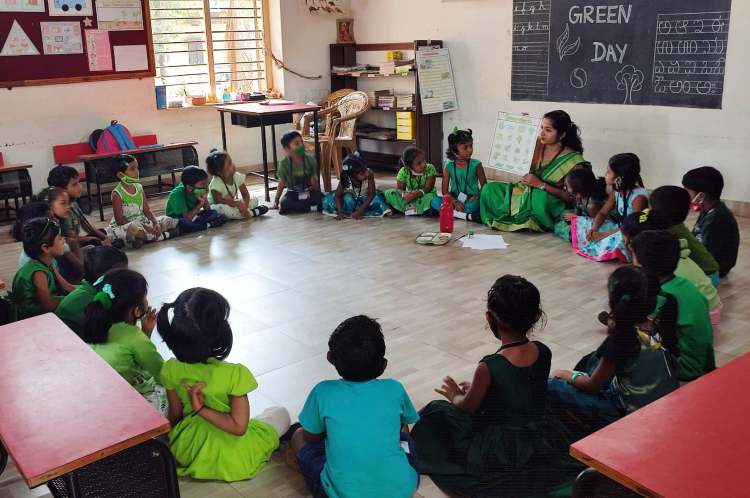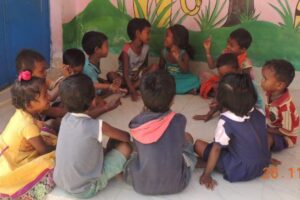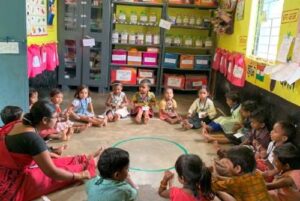
Poshan Abhiyaan, launched in 2018, was billed as a transformative initiative to combat malnutrition. Envisioned as a multi-ministerial convergence mission, it has since evolved into Poshan 2.0, targeting children under six, adolescent girls, pregnant women, and lactating mothers. Yet, despite its ambition and scale, the problem remains far from solved. India still ranks a lowly 116 out of 180 countries on the Human Capital Index, revealing the distance yet to be covered.
Government data shared in Parliament highlights some improvement in reducing stunting, wasting, and anaemia among children. But the gains are uneven. States with low per capita incomes, such as Bihar and Uttar Pradesh, continue to struggle with nutritional outcomes. These states often lack the fiscal capacity to subsidise protein-rich foods like meat and dairy. In contrast, southern states such as Tamil Nadu and Kerala report significantly better child health indicators.
According to the National Family Health Survey (NFHS) 2019–21, Bihar had among the highest rates of stunted and underweight children, followed by Uttar Pradesh, Gujarat, and Maharashtra. States like West Bengal, Rajasthan, and Andhra Pradesh fall in the middle. These disparities reflect underlying economic inequities and policy inefficiencies.
READ I Gender gap: India’s growth story is failing its women
Hunger in the midst of plenty
India operates one of the largest foodgrain distribution programmes in the world, reaching nearly 800 million people. Yet, calorie intake among the poorest 5% remains dismally low — just 1,688 kilocalories a day in rural areas and 1,696 in urban ones, according to the latest Household Consumption Expenditure Survey. This falls well short of the recommended daily intake of 2,500 kilocalories, exposing the limitations of a grain-heavy food security approach that ignores dietary diversity and quality.

Among the starkest failures is the continued neglect of women’s nutritional needs. Despite India’s rise as a major global economy, nutritional inequality — especially gendered inequality — remains pronounced. NFHS-5 data show that 57% of women aged 15–49 are anaemic, compared with 26% of men. Nearly one in five women is underweight. These figures point to a systemic bias rooted in socio-cultural norms, where women and girls eat last and least in many households, particularly in impoverished regions.
The Poshan Abhiyaan rightly focuses on the first 1,000 days of a child’s life — a critical window for growth and development. However, the success of this emphasis hinges on the health of the mother, which remains compromised. Despite the consolidation of multiple schemes into Poshan 2.0 and increased allocations, outcomes for women show minimal improvement.
The missing link: Women’s empowerment
The underlying issue is not merely one of budgetary allocation or programme design — it is one of status. In households with constrained resources, women’s nutrition is not a priority. Without decision making power or economic independence, women are unable to influence what they eat or how much they access healthcare.

Government reports often highlight the campaign’s success in creating a Jan Andolan or people’s movement around nutrition. But awareness cannot substitute for access. Structural barriers — low incomes, poor education, and gender discrimination — undermine the best of intentions. Research consistently shows that women with control over financial resources are more likely to invest in the health and nutrition of their families. Thus, unless Poshan Abhiyaan is linked with programmes aimed at enhancing women’s income and social standing, its impact will remain constrained.
Rethinking Poshan Abhiyaan model
Nutrition cannot be addressed in isolation. The need of the hour is a genuine convergence of food security, healthcare, and livelihood schemes, especially in high-burden states like Uttar Pradesh and Bihar. Ministries often operate in silos, leading to fragmented delivery and diluted outcomes.
Anganwadi centres, which serve as the frontline of Poshan Abhiyaan, must be equipped to do more than distribute supplements. They can become hubs for connecting women with skill training, microcredit, and employment schemes. Such integration can improve not only nutrition outcomes but also household resilience.
Technological tools like the Poshan Tracker and facial recognition systems for ration distribution have improved monitoring and reduced leakages. These systems need further expansion and refinement to ensure real-time data, local-level planning, and accountability. Targeted interventions in the most backward districts should be prioritised, backed by state-level innovations in food supply and behavioural change campaigns.
Building on community mobilisation
One of Poshan Abhiyaan’s most promising aspects is its community-based approach. The Jan Andolan model can be further scaled through regional campaigns that reflect local food habits and cultural contexts. Nutritional interventions must adapt to regional diets and social conditions rather than rely on a one-size-fits-all template.
The fight against malnutrition is a long-term battle. It requires more than slogans and awareness campaigns — it demands sustained political commitment, increased financial outlays, and structural reforms that address gender and income inequality.
India has made progress, but the pace is insufficient. A reimagined Poshan Abhiyaan—one that integrates nutrition with women’s empowerment, local governance, and grassroots livelihoods—can move the needle. Otherwise, the ambitious vision of a malnutrition-free India will remain, at best, an aspirational goal.
